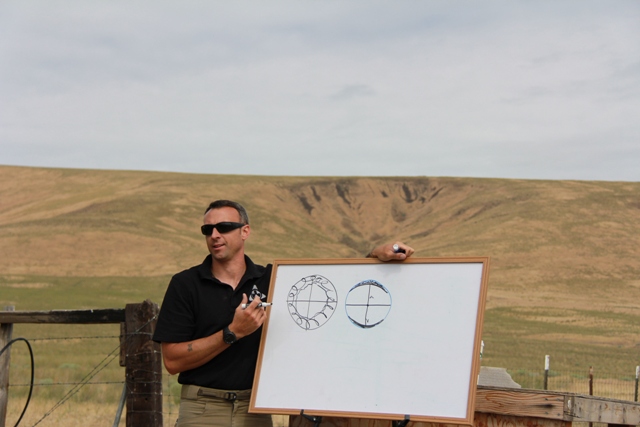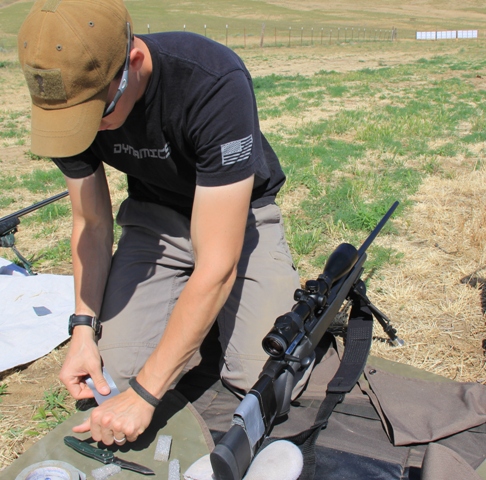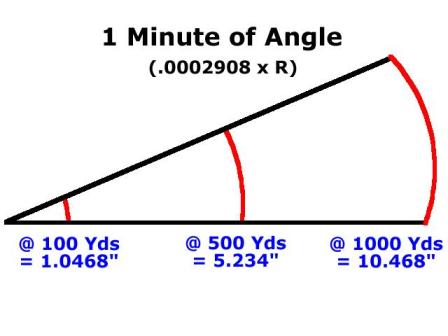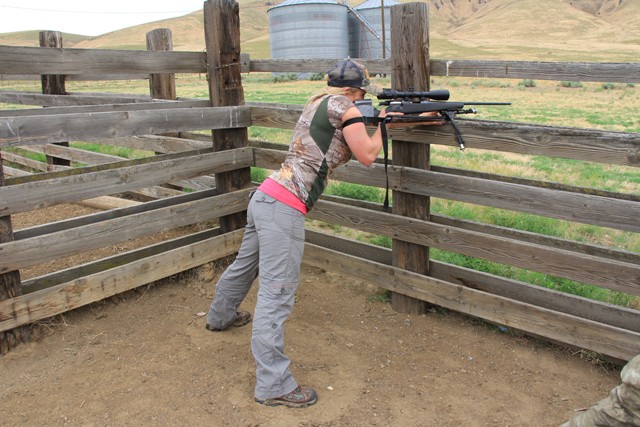July 10th WOD
July 11, 2013July 11th WOD
July 12, 2013
 “We do not rise to the occasion, but rather fall back to our level of training.”
“We do not rise to the occasion, but rather fall back to our level of training.”
When the animal of your dreams is in your cross hairs, the pressure is on, this is your moment; the moment that you have dreamt about for years or possibly for your entire life. Do you have the training and the skill set to make that one shot count?
Mother Nature is unpredictable and that moment can come and go with the blink of an eye. That is the reason that I attended the Precision Hunter course with MagPul Dynamics. When that moment of truth arrives, I want to know that I have trained myself and have done everything possible so that I am ready to take that shot, making my dreams come true rather than haunt me for the rest of my life.
The Precision Hunter course is a two day course specifically designed with the hunter in mind. For me and many hunters that I know, there is an old school train of thought and set of fundamentals being passed down for generations, some good and some bad. I personally learned to shoot a rifle with my father and he learned from his father.
Old school, meet new school…
No matter how many years you have been hunting and shooting, there are new skills that you can learn and develop while in this class. Understanding and developing proper fundamentals will help all of us to extend our comfort zone in the field creating responsible, ethical shots.
Discussing the basic components of our firearm from the scope, the ammunition and finally the shooter  achieving a more comprehensive understand to the limitations of each component and where and how to isolate each variable when things seem to be going wrong at the practice range. Giving us the tools to evaluate and isolate and trouble shoot equipment problems or fundamental errors.
achieving a more comprehensive understand to the limitations of each component and where and how to isolate each variable when things seem to be going wrong at the practice range. Giving us the tools to evaluate and isolate and trouble shoot equipment problems or fundamental errors.
Rifle fit has been my personal biggest issue in both competence and confidence in the field. As a hunter, in years past, I have been handed ill fitting rifles and expected to have down range accuracy without a solid understanding of the fundamentals of marksmanship and without the understanding of how to even take a proper rest.
 In the course, proper rifle fit is discussed and everyone’s rifle is evaluated for each shooter. Having the understanding of the importance of correct length of pull, the inclusion of an adjustable cheek weld, correct grip and how that influences correct trigger pull was a huge eye opener for many of the lifetime hunters in the class.
In the course, proper rifle fit is discussed and everyone’s rifle is evaluated for each shooter. Having the understanding of the importance of correct length of pull, the inclusion of an adjustable cheek weld, correct grip and how that influences correct trigger pull was a huge eye opener for many of the lifetime hunters in the class.
The most seemingly basic components are broken down to expose their true complexity and their importance for down range accuracy. Everything from proper scope mounting, use of a scope level, how helpful a bi-pods are for hunters and no I am not talking about for prone shooting, the importance of having a functional rifle sling that is not just a tool to hang your rifle from your shoulder. We learned how multiple sling attachment points and ways to use the sling to aid a hunter in developing a steadier rest.
We learned how to use our off season time to develop a training plan, even if it is only 30 rounds a month. Maximizing your time on the range and making every shot count is key to success in the field.
We were taught the basics of angular units of measure, both milliradian and minutes of angle and which unit our own personal optics were in and how to understand them from the turrets to the reticle.
unit our own personal optics were in and how to understand them from the turrets to the reticle.
Environmental conditions that affect bullet trajectory and performance were discussed. Going into detail on how environmental conditions such as elevation, temperature, humidity and density altitude will affect your bullet trajectory.
As a hunter, it is critical to know where your rifle zero is and where your max point blank range is. Max point blank is a formula that is used to determine where to hold center mass on a target and still successfully engage the target down rage (high side and low side) without making a turret elevation adjustment or “Holding Over”.
I found this information especially helpful when it comes to hunting. I can take my target’s estimated terminal kill zone size and create and estimate of “how big” that is and then use the taught data to find out exactly where I want my rifle zero set to deliver that terminal shot at a known distance without making turret adjustments. What a time saver this is!!!
 Shooting positions was the main focus on the range on day two. In the field, the type of shooting position that we will be able to acquire to engage our target will vary constantly. Learning numerous resting positions that you can practice at home is key to success in the field. If you can think it up, practice it. No two hunting situations are the same and we must learn to be adaptable, making the most of each opportunity.
Shooting positions was the main focus on the range on day two. In the field, the type of shooting position that we will be able to acquire to engage our target will vary constantly. Learning numerous resting positions that you can practice at home is key to success in the field. If you can think it up, practice it. No two hunting situations are the same and we must learn to be adaptable, making the most of each opportunity.
Precision hunter is designed to aid the hunter in expanding their current skill set, improve upon it and attain more confidence in the field allowing you to be your best when it counts.

